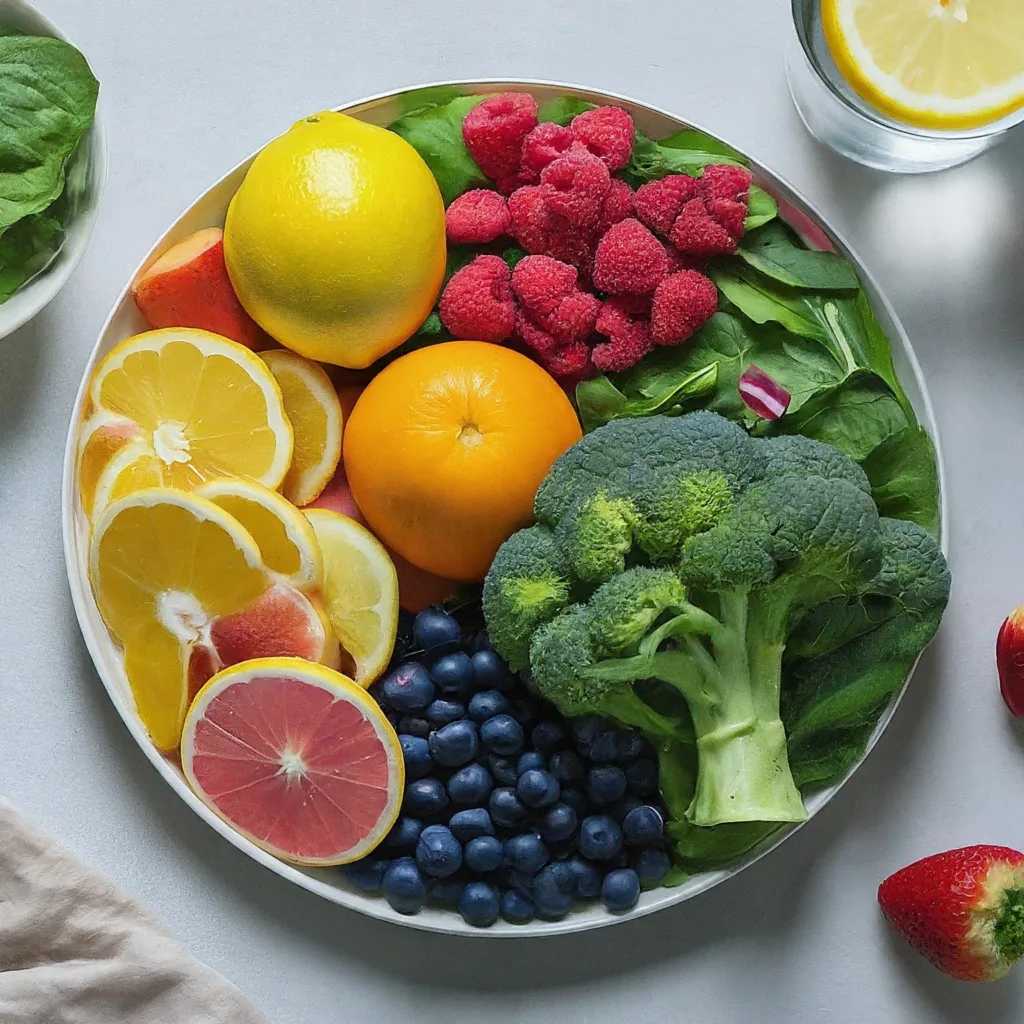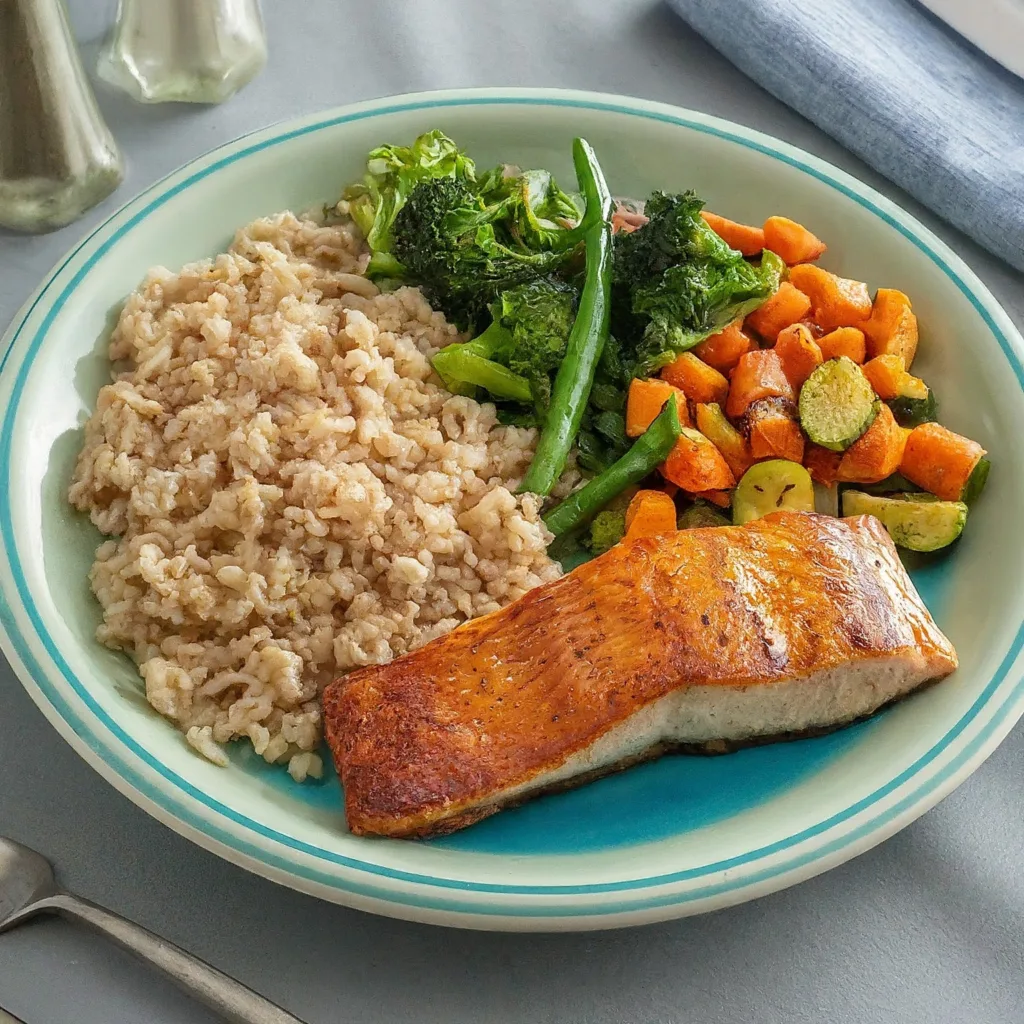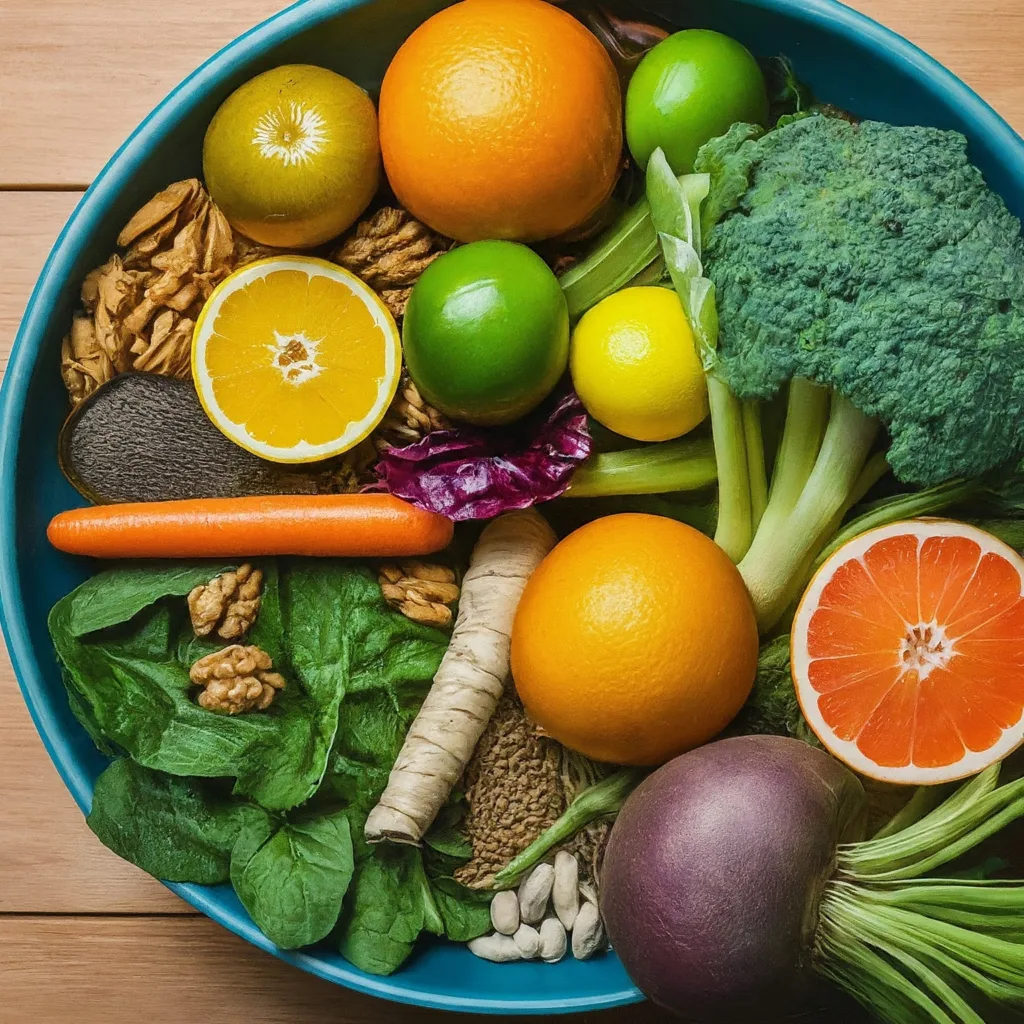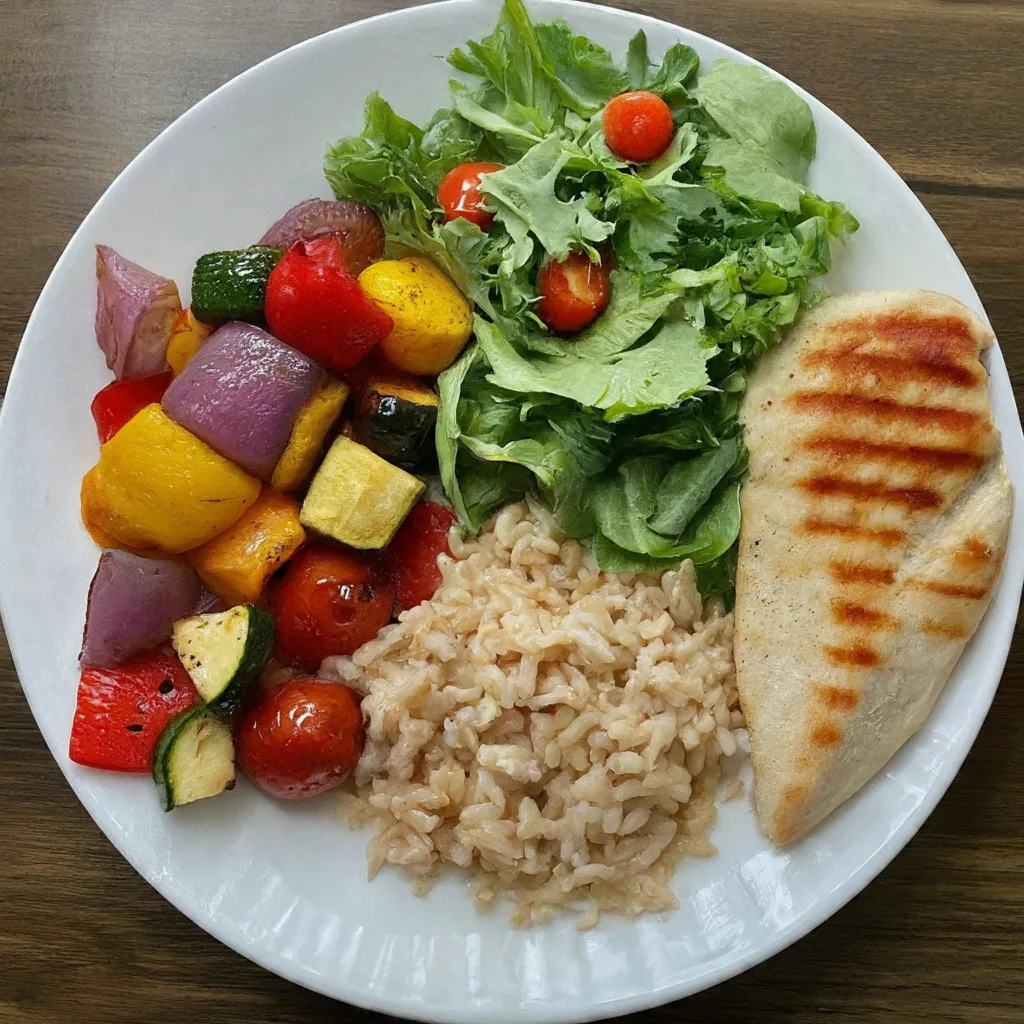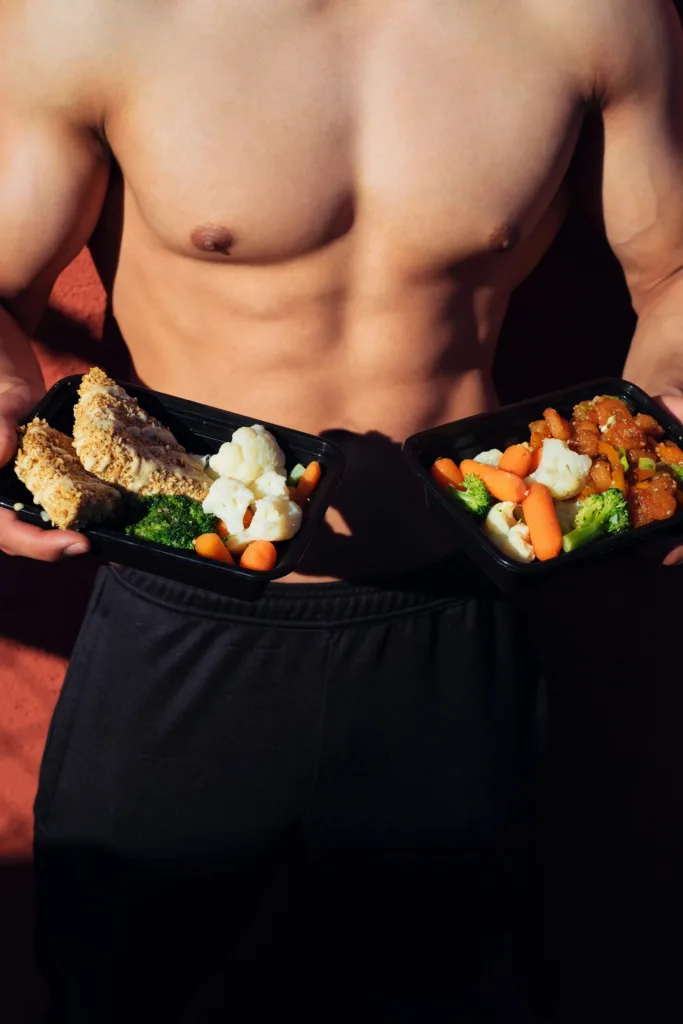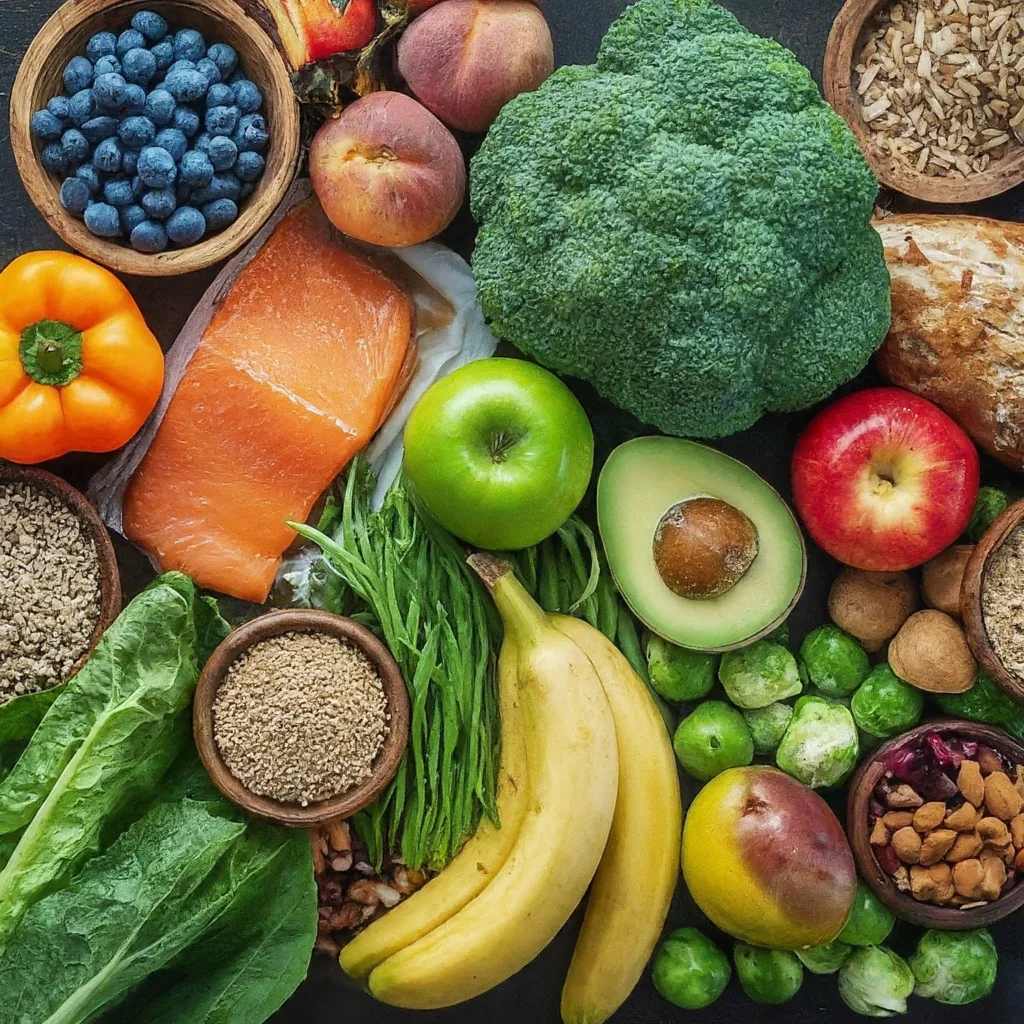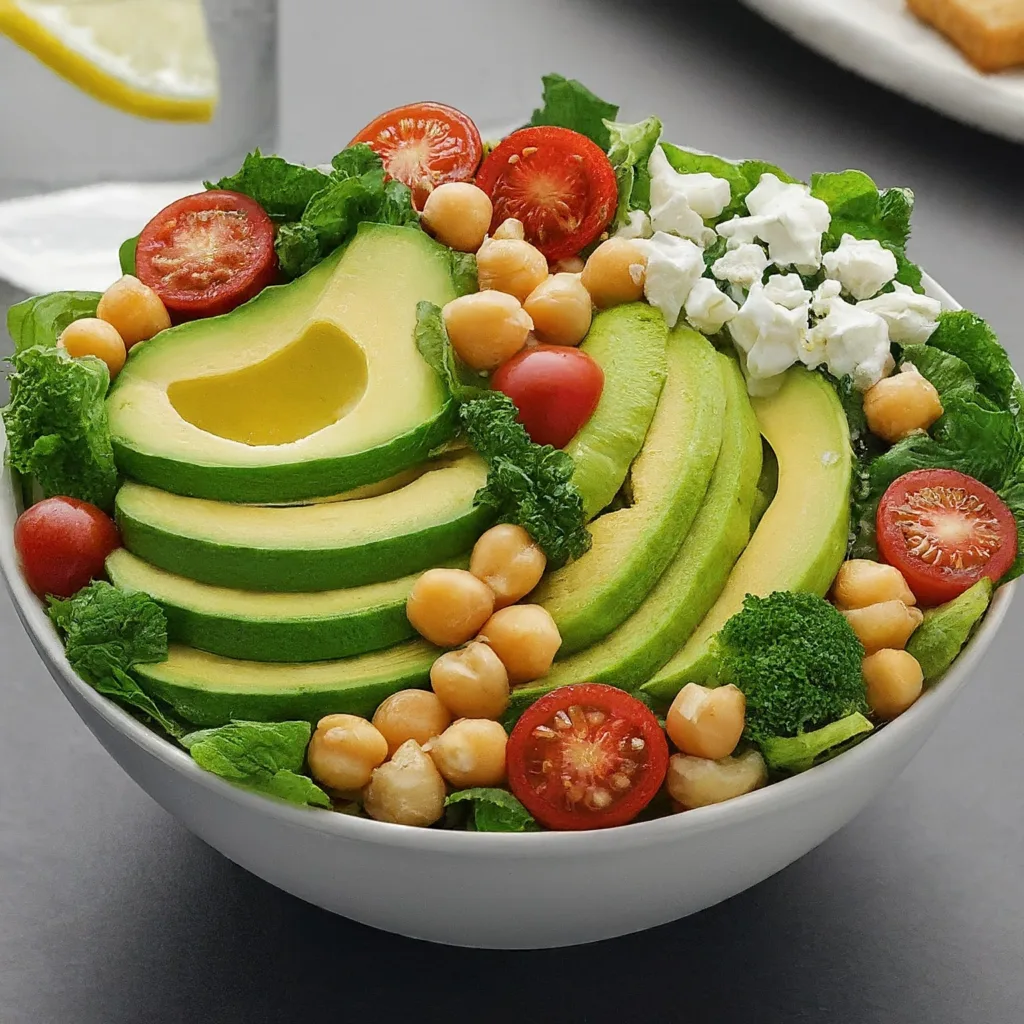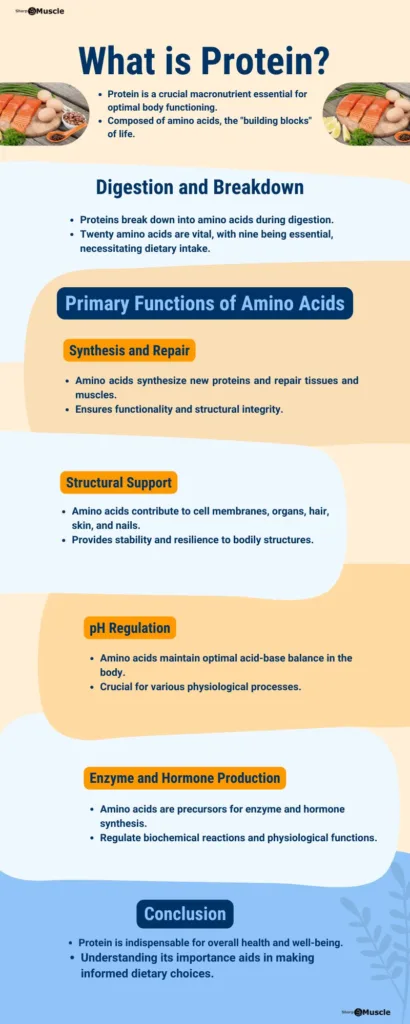High Blood Pressure, also known as Hypertension, often referred to as the ‘silent killer’, is usually asymptomatic – meaning no symptoms are shown.
Some people with high blood pressure will experience symptoms including chest pain, dizziness, headache, shortness of breath, palpitations, and bleeding from the heart and nose. However, most people will not experience any symptoms – until the damage is done which often occurs after many years of living with high blood pressure.
The first thing to preventing and managing Hypertension is to understand Hypertension, its causes, effects, and long-term consequences.
Continue reading all of this will be covered in this post. If you already have high blood pressure, it is important to control and monitor your blood pressure regularly. Because of this, we will explain how to monitor your own blood pressure at home. We’ll cover and take into account everything you need to know to create a successful high blood pressure DASH eating plan to treat it — all without any prescription drugs!
Understanding and Reading High Blood Pressure (Hypertension)
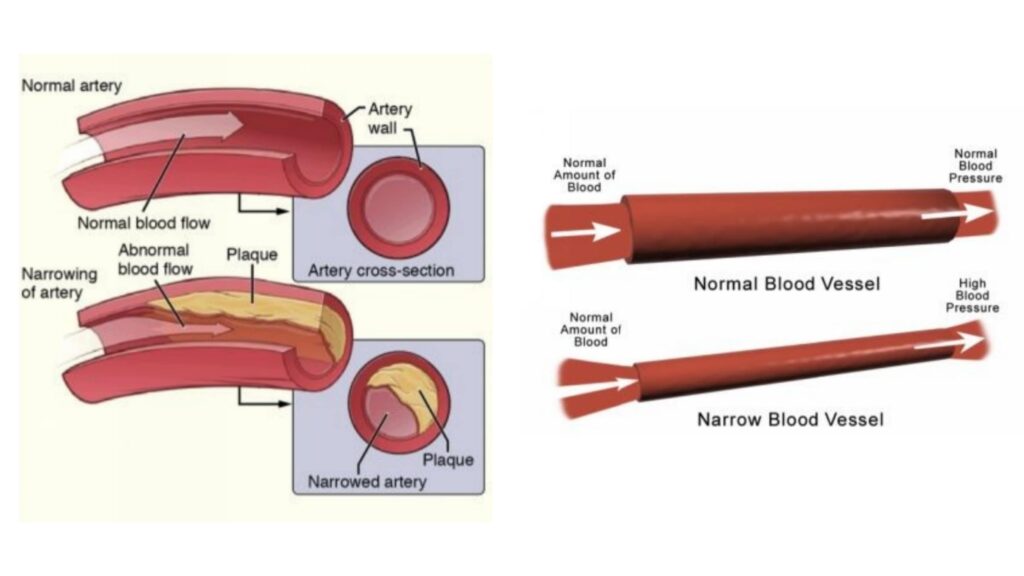
The blood pressure is a measure of the force of blood pushing against the walls of the arteries. Arteries are large blood vessels that carry blood from the heart muscle to all other organs and muscles of the body. As blood is carried around the body, it pushes inside the artery walls. We measure the force of this ‘push’ as blood pressure.
Hypertension is a medical condition in which the arteries are subject to persistent high blood pressure. This increased pressure is caused by an increase in the pressure of the blood against the walls of the arteries. The increased pressure can be due to the thickening or hardening of the arteries due to a build-up of plaque. Thicker walls of the arteries mean that there is less space for blood to flow through the arteries. This thickening (or narrowing of the artery) results in abnormal blood flow causing the blood to push harder against the walls of the arteries. This increases the blood pressure.
The higher the pressure, the more strain the arteries are under, and the harder it is for the heart to pump and distribute blood to the body. When blood pressure is high, it puts stress on the body, which in turn can damage the heart, kidneys, brain, and eyes.
How is blood pressure measured?
Blood pressure is expressed using two numbers – diastolic pressure (as the heart relaxes) over systolic pressure (heart beats).
- The normal systolic pressure is 120 mm Hg and
- The normal diastolic pressure is 80 mm Hg.
Therefore normal blood pressure is written as 120 over 80 or 120/80.
Your pulse pressure is the difference between a systolic pressure reading and a diastolic pressure reading. Pulse pressure refers to the force that your heart muscle produces each time it contracts. So, provided your blood pressure is normal, ie 120/80 mm Hg, then your pulse pressure is 40 (120 – 80 = 40).
According to the JNC7 report and guidelines, the following are the current blood pressure ranges and their corresponding systolic and diastolic pressure values:
| Category | Systolic Pressure | Diastolic Pressure |
|---|---|---|
| Optimal | 115 or less | 75 or less |
| Normal | 120 or less | 80 or less |
| Prehypertension | 121 to 139 | 81 to 89 |
| Stage-1: Hypertension | 140 to 159 | 90 to 99 |
| Stage-2: Hypertension | 160 or more | 100 or more |
When systolic blood pressure is equal to or greater than 140 mm Hg and/or diastolic blood pressure is greater than or equal to 90 mm Hg, blood pressure is considered high (140/90). If one of the values (systolic or diastolic) is in one of the categories of hypertension, the patient is considered to be in that specific ‘stage’ of hypertension.
Note: Your blood pressure target should be 120/80, or even better, 115/75.
Causes, Types and Stages of High Blood Pressure (Hypertension)
There are some irreversible factors as well as some modifiable factors that contribute to High Blood Pressure (Hypertension).
In general, irreversible factors that may be the underlying cause of high blood pressure include age, gender, ethnicity, family history, and the individual’s medical history. Variable factors influencing high blood pressure include diet, exercise routines, and stress management.
Primary blood pressure (essential hypertension)
Primary blood pressure, also called essential hypertension, where the exact cause of high blood pressure is unknown. The causes of essential hypertension may be genetic, due to aging, or may be influenced by environmental factors.
Some of the most common environmental factors that affect high blood pressure include:
- Depression
- Excessive caffeine intake
- Excess salt intake – This increases blood pressure in salt-sensitive individuals
- Lack of physical activity
- Obesity
- Tension (Stress)
Secondary Hypertension
Secondary hypertension is blood pressure resulting from a disease, so there is an identifiable cause.
The secondary causes/conditions that can cause hypertension include but are not limited to:
- Acromegaly – Abnormal growth or enlargement of the arms, legs, and face
- Coarctation (narrowing) of the aorta
- Conn syndrome
- Cushing’s syndrome
- Hyperaldosteronism – A condition of excessive secretion of aldosterone that leads to high blood pressure and low potassium levels
- Hyperthyroidism – A condition in which there is a rapid heartbeat due to abnormal over-activity of the thyroid gland or Hypothyroidism – A condition where the activity of the thyroid gland is abnormally low
- Kidney disease – It is the most common secondary cause of high blood pressure
- Obesity
- Pheochromocytoma – Tumor of the adrenal medulla
- Pregnancy
- Sleep apnea
One of the most effective ways you can gain an understanding of your current health is to regularly measure your blood pressure using a home monitoring device.
Different stages of high blood pressure (hypertension)
- Prehypertension: Individuals who are considered under the prehypertension classification are strongly encouraged to adopt health-promoting lifestyle changes/modifications.
- Stage-1 High Blood Pressure (Hypertension): During this stage, defined by constriction of the arteries or an increase in blood volume, high blood pressure is reversible.
- Stage-2 High Blood Pressure (Hypertension): During this stage, with permanent thickening of the blood vessels, high blood pressure is irreversible without the use of medication.
- Stage-3 High Blood Pressure (Hypertension): This stage is a hypertensive emergency.
How to test your blood pressure correctly?
Blood pressure self-measurement is an ideal way to give a better understanding of blood pressure and your health. If your blood pressure is normal, getting it checked during regular check-ups will suffice. If you have been diagnosed with high blood pressure, measuring your blood pressure at home is an ideal way to track your progress and also give you a source of inspiration!
The Sphygmomanometer instrument is use to measure blood pressure. Other easy words to describe this device include blood measurement meter, blood measurement monitor and blood measurement gauge.
Aneroid blood pressure gauge
However it is important to note that if you are using an ‘aneroid blood pressure gauge‘ at home, it is important to regularly verify and calibrate your equipment at your health clinic. This verification should be done at least every 6 months to ensure the accuracy of your blood pressure readings.
You will also need a stethoscope which is a medical device that allows you to listen to different sounds inside the body. The stethoscope is made up of ear pieces and a bell, which is the point of contact.
To get an accurate blood pressure reading, follow the following steps:
Before taking your blood pressure
Do not exercise, eat, smoke, drink alcohol or coffee for at least 15 minutes before taking your blood pressure. This is because all of these factors can affect your blood pressure readings.
Make sure you use an appropriately sized blood pressure cuff. The bladder length of the cuff should be at least 80% of the circumference of your upper arm. Use smaller cuffs and larger cuffs on children if you are overweight or muscular.
Fix the seat! Sit down with your arms and back supported. Your elbows should be supported at approximately the same level as your heart, eg. On a table next to you. Hang your legs up, remain silent and rest in the exact same position for a few minutes before taking the reading.
Steps:
- Wrap the cuff around your upper arm and almost release the bottom edge of the cuff. One inch above the bend of your elbow.
- Place the earpiece of the stethoscope in your ear and the bell of the stethoscope on your arm over your brachial artery (on your lower arm, just below the edge of the cuff).
- Rapidly inflate the cuff to 180 mm Hg. At this point you will hear no sound and feel no pulse through the stethoscope.
- Release the air at a rate of about 2 to 3 millimeters per second. At this point, blood will start flowing through the artery again.
- Listen carefully with a stethoscope while looking at the blood pressure monitor.
As soon as you hear the first sound in the stethoscope, record the number on the monitor, not the number. The first knocking sound, also known as Kortokoff, is the systolic blood pressure (SBP). When sound stops, record the number on the monitor. This second number is diastolic blood pressure (DBP).
Be sure to immediately record the SBP number and DBP number when taking the blood pressure, as well as which arm was used during the measurement.
Alternatively, you can also buy a digital blood pressure monitor which makes it very easy to get your blood pressure reading! If you use a digital device, it is still important that your readings be validated and that your device is calibrated if necessary.
Other things to consider when testing your blood pressure at home is that when recording your blood pressure, be sure to record the date and time of the reading as well. Be sure to check your blood pressure both in the morning and in the evening to notice any difference.
Testing your blood pressure at home is a great way to check whether your lifestyle changes are having a positive effect on your blood pressure, or whether medications are effective. On top of that, it gives you more freedom as well as constant feedback on your progress – a great source of inspiration!
Note: Lastly, it is important to note that blood pressure taken at home tends to be lower than normal. Because of this, your blood pressure target should be 135/85 mm Hg.
Treating and Preventing High Blood Pressure (Hypertension)
Everyone should have their blood pressure checked regularly. If your blood pressure is high, it is important to seek advice and adopt lifestyle modifications that will help lower your blood pressure.
For most people, the lifestyle changes outlined in this section will be enough to control blood pressure. For others, usually in Stage-2 High Blood Pressure (Hypertension), such changes are insufficient and prescription medications are needed to control blood pressure. But even for those receiving pharmacological treatment, it is important to adopt these healthy lifestyle changes as they work to increase the effectiveness of the drugs.
Whatever stage you find yourself at, there are five major lifestyle changes you can adopt to prevent or reduce your risk of developing high blood pressure. These will be discussed in turn in this section and will broadly include the following:
- Avoiding salt
- Adopt a healthy diet
- Avoiding harmful substances
- Exercising regularly
- Managing stress
Cut down salt
When you try to lower your blood pressure (hypertension), salt is your worst enemy. Studies have shown that in most cases, eating less salt leads to lower blood pressure and fewer cases of heart or brain health complications.
Therefore, in general, the lower your salt intake, the lower your blood pressure. This is because excess sodium holds extra fluid in the body, placing an additional burden on your heart, which increases blood pressure. Because of this, it is extremely important to control salt intake to lower your blood pressure and thereby reduce your risk of health complications.
In this you will learn about salt, how to reduce the amount of salt in your diet, which foods are high in salt, which foods are low in salt, along with tricks and tips to stick to a low salt diet!
Sodium
It is important to remember that sodium is both a friend and an enemy in many ways. Sodium is important to the body as it maintains the acid and base balance which is essential for the body’s functions to operate effectively.
The normal sodium balance of the body can be maintained by a daily intake of 3/4 teaspoon of salt. Food labels will usually state the amount of sodium content.
The American Heart Association’s Dietary Guidelines recommend a daily intake of 1,500 milligrams of sodium a day. However, the average person can consumes 1,500 to 2,300 milligrams of sodium a day.
Contrary to popular belief, table salt is not the biggest contributor to our daily sodium consumption – the vast majority (about 75%) of sodium is being consumed through restaurant foods and processed foods.
Sodium content in salt
Salt contains about 40% sodium and 60% chloride. The following are approximate amounts of sodium found in table salt:
| Salt | Sodium contains |
|---|---|
| 1/4 teaspoon | 575 mg |
| 1/2 teaspoon | 1,150 mg |
| 3/4 teaspoon | 1,725 mg |
| 1 teaspoon | 2,300 mg |
The U.S. Food and Drug Administration (FDA) has published the following guidelines for food companies to help you understand the salt content of the products you buy (accurate as of March 2016): It’s important to note that the FDA is currently updating Nutrition Facts Labels for Packaged Foods).
- Sodium-free: Sodium free means that the product contains less than 5 milligrams of sodium per serving.
- Very low sodium: This means the product contains 35 mg sodium or less per serving.
- Low sodium: It means the product contains 140 mg of sodium or less per serving.
- Reduced sodium: Means that the product contains at least 25% less sodium than the regular product.
- Light in sodium or Light salted: Means that the product contains at least 50% less sodium than the regular product.
- No-salt-added, or Without added salt, or Unsalted: This means that no salt is added to the product during processing – note that, unless specifically stated, these products are not salt/sodium free.
Healthy Food Choices
As mentioned earlier, processed food makes up about 75% of normal sodium intake. Because of this, reducing the amount of processed high-salt food can go a long way in helping you manage your blood pressure.
The list of prepared foods given below that are particularly high in sodium, so it’s highly recommended to reduce or cut down on the intake of the following:
- Anchovies
- Ham, Bacon, Poultry, Sausage, Cold Cuts and Cured Meats
- bread and rolls
- Broth (Bouillon) cubes
- Canned tuna
- Canned vegetables
- Cheese (natural and processed), especially cottage cheese
- Condiments
- Cooking sauces, eg.:
- Soy sauce, Spaghetti sauce
- fried pieces of bread
- Gravy
- Olives
- Croutons
- Pickle
- Pizza
- Prepared meat dishes, eg.:
- Beef Stew, Chili, and Beef loaf
- Prepared pasta dishes, eg.:
- Pasta Salad, Lasagna, and Spaghetti with meat sauce
- Ready sandwiches, eg.:
- Hamburgers, Hot dogs and Submarines sandwich
- Prepared soups, eg.:
- Canned soup
- Salsa and Salad Dressing
- Salty snacks, eg.:
- Chips, Crackers, Popcorn, and Pretzels
- Tomato and vegetable juice
Tips and tricks for reduce the salt intake
- Take the salt off your dining table and put it in the cupboard!
- Eat fresh, raw vegetables.
- Replace crisps and other salty snacks with fruit.
- Reduce your intake of the following sauces: Mustard, ketchup, Worcestershire sauce, all of which are high in salt. Reduce the intake of salt-rich food.
- Avoid dry fruits that contain salt.
- Avoid processed foods. As a general rule of thumb, the more unprocessed your food is, the more raw it is and the lower the salt content.
- Buy fresh food.
- Check the Label! Buy only products that state the following: ‘low sodium’ or ‘no salt added’. As a general rule of thumb, avoid products that contain more than 180 milligrams of sodium.
- Buy canned foods with no added salt or low sodium.
- Always use less salt than mentioned in the recipe while cooking.
- Wash canned foods that contain sodium. This removes the sodium before cooking.
- To flavor your food, replace salt with herbs, spices, lemon, lime, vinegar, white or red wine.
- Avoid condiments that have high salt content, eg. Teriyaki sauce, soy sauce and anything that contains monosodium glutamate.
- Avoid salted butter and sauces/dressings that have high salt content.
- When eating out, request to prepare your meals with a little salt or to have sauces such as salad dressings on the side so you can control the amount you eat.
Potassium
Both potassium and sodium affect blood pressure. Eating high-potassium foods like bananas, beans, dark leafy greens, potatoes, squash, yogurt, fish, mushrooms and avocados can help you balance some of the harmful effects sodium has on your blood pressure.
So in short, to promote a lifestyle that emphasizes proper nutrition, the following are three general guidelines that you should follow:
- Reduce salt intake to less than 5 grams of salt per day (i.e. just under a teaspoon).
- Everyday eat fruits and vegetables at least five servings.
- Reduce saturated and total fat intake.
Adopting the DASH eating plan
Weight loss is central to preventing and reducing hypertension. Planning to adopt a DASH (diet approach to prevent hypertension), with sodium restrictions, is one of the most effective methods in potassium and calcium, in which you can reduce your blood pressure. The studies have shown that all patients have adopted DASH Diet, they have successfully managed to reduce the readings of their systolic and diastolic blood pressure.
DASH theory
Dash emphasizes the intake of fruits and vegetables. This is because this category of foods is high in potassium – as much potassium, reduce blood pressure. This correlation is still dependent on the reduction in salt intake. It is believed that with a growth in a balanced diet, less salt and potassium intake with various nutrients, blood pressure is responsible for less effect.
DASH diet emphasizes good nutrition on calorie count. Nutritiously balanced diet is the most important to achieve long-term weight loss success and long-term health benefits.
DASH Daily Servings food recommends
When selecting your food, always remember to opt for low-salt food. In addition to foods, you can also include five servings of ‘sugars’ per week.
Collectively, the below foods will provide you with a nutritionally balanced diet that will not only boost your metabolism, optimize digestion and revitalize your body’s fat burning system, but will also help reduce your appetite and reduce your appetite. Will help control too!
1. Fruits and vegetables
- Peaches
- Peas
- Pineapples
- Prunes
- Spinach
- Squash
- Strawberries
- Sweet potatoes
- Tangerines
- Tomatoes
- Apples, apple juice
- Apricots
- Artichokes
- Bananas
- Broccoli
- Carrots
- Collards
- Dates
- Grapefruit
- Grapes, grape juice
- Green beans
- Greens
- Kale
- Mangos
- Melons
- Oranges, orange juice
2. Grains
- Oatmeal
- Whole wheat bread
- Cereals that are high in fiber
- English muffins
- Pita bread
3. Dairy
- Skimmed or low-fat buttermilk
- 1% fat or skimmed milk
- Fat-free cheese or part-skim mozzarella
- Low-fat or fat-free yogurt
4. Lean meat, Seafood, or Poultry
- Steamed fish/meat (without fry)
- Lean meat
- Poultry (without skin)
5. Beans, Nuts and Seeds
- Kidney beans
- Split beans
- Pinto beans
- Lentils
- Tofu
- Sunflower or sesame seeds
- Almonds, peanuts, mixed nuts
Dash eating sample menu plan for High Blood Pressure (Hypertension)
The DASH diet is based on a 2000-kilocalorie-a-day eating plan. It is incredibly easy to incorporate into your daily lifestyle and requires a daily intake of the following:
Monday + Wednesday + Friday: Dash eating plan (Sodium 2297mg)
Meal-1: Sodium 508mg
| Ingredients | Quantities |
|---|---|
| Oat Bran Cereal | 170g |
| Banana (medium size) | 1 |
| Milk (low-fat) | 1 cup |
| Bread (Whole-wheat) | 1 slice |
| Margarine (soft tub) | 1 teaspoon |
| Orange juice | 1 cup |
Meal-2: Sodium 196mg
| Ingredients | Quantities |
|---|---|
| Milk (low-fat) | 1 cup |
| Cashew nuts | 25g |
| Apricots | 1/4 cup |
Meal-3: Sodium 905mg
| Ingredients | Quantities |
|---|---|
| chicken breast | 45g |
| Bread (Whole-wheat) | 2 slice |
| Mustard | 33g |
| Cucumber (slices) | 1/2 cup |
| Tomato | 1/2 cup |
| sunflower seeds | 1 tablespoon |
| Italian dressing (low calorie) | 1 teaspoon |
| Fruit cocktail (juice pack) | 1/2 cup |
Meal-4: Sodium 91mg
| Ingredients | Quantities |
|---|---|
| Almonds (unsalted) | 50g |
| Raisins | 28g |
| Fruit yogurt (non-fat) | 150g |
Meal-5: Sodium 597mg
| Ingredients | Quantities |
|---|---|
| Beef (eye of the round) | 85g |
| Beef gravy (fat-free) | 2 tablespoon |
| Green beans | 1 cup |
| Canola oil | 1/2 teaspoon |
| Potato (cooked) | 1 small |
| Sour cream (fat-free) | 1 tablespoon |
| Grated cheddar cheese | 1 tablespoon |
| Roll (whole-wheat) | 1 small |
| Scallions (chopped ) | 1 tablespoon |
| Margarine (soft tub) | 1 teaspoon |
| Milk (low-milk) | 1 cup |
| Apple | 1 |
Tuesday + Thursday + Saturday: Dash eating plan (Sodium 2101mg)
Meal-1: Sodium 559mg
| Ingredients | Quantities |
|---|---|
| Oatmeal | 1 cup |
| Banana | 1 medium |
| Fruit yogurt (fat-free) | 1 cup |
| Milk (low-fat) | 1 cup |
Meal-2: Sodium 550mg
| Ingredients | Quantities |
|---|---|
| Tuna (drained, rinsed) | 1/2 cup |
| Low-fat mayonnaise | 1 tbsp |
| Leaf romaine lettuce | 1 large |
| Tomato | 2 slices |
| Whole-wheat bread | 2 slices |
| Apple | 1 medium |
| Non-fat milk | 1 cup |
Meal-3: Sodium 169mg
| Ingredients | Quantities |
|---|---|
| Whole-wheat crackers | 6 |
| Apricots (dry) | 1/4 cup |
| Almonds (unsalted) | 1/3 cup |
Meal-4: Sodium 797mg
| Ingredients | Quantities |
|---|---|
| Zucchini lasagna | 1/6 recipe |
| Spinach leaves | 1 cup |
| Tomato | 1 cup |
| Croutons (seasoned) | 2 tbsp |
| Vinaigrette dressing (reduced-calorie) | 1 tbsp |
| Sunflower seeds | 1 tbsp |
| Whole-wheat roll | 1 small |
| Margarine (soft tub) | 1 tsp |
| Grape juice | 1 cup |
Sunday: Dash eating plan — (Sodium 1671mg)
Meal-1: Sodium 280mg
| Ingredients | Quantities |
|---|---|
| Granola bar (low-fat) | 1 |
| Fruit yogurt (low-fat) | 1/2 cup |
| Non-fat milk | 1 cup |
| Banana | 1 medium |
| Orange juice | 1 cup |
Meal-2: Sodium (111mg)
| Ingredients | Quantities |
|---|---|
| Apricots (dried) | 1/4 cup |
| Milk (low-fat) | 1 cup |
| Almonds (unsalted) | 2 tbsp |
Meal-3: Sodium (801mg)
| Ingredients | Quantities |
|---|---|
| Turkey breast | 85g |
| Whole-wheat bread | 2 slices |
| Leaf romaine lettuce | 1 large |
| Tomato | 2 slices |
| Low-fat mayonnaise | 2 teaspoon |
| Mustard | 33g |
| Broccoli (steamed) | 1 cup |
| Orange | 1 medium |
Meal-4: Sodium (478mg)
| Ingredients | Quantities |
|---|---|
| Baked fish (spicy) | 85g |
| Scallion rice | 1 cup |
| Spinach (cooked) | 1/2 cup |
| Canola oil | 2 teaspoon |
| Almonds (slivered, unsalted) | 1 tablespoon |
| Carrots (cooked) | 1 cup |
| Whole-wheat roll | 1 small |
| Cookie | 1 small |
| Margarine (soft tub) | 1 teaspoon |
Tips to stick on High Blood Pressure (Hypertension) DASH eating diet plan
- Don’t change your diet from one day to the next. It’s important to gradually get used to your new healthy-heart eating plan. Gradually increase your fruit and vegetable intake from day to day.
- Increase your vegetable and fruit intake to two servings with each meal and twice a day for breakfast.
- Use lactose-free milk or take lactase tablets if you are lactose intolerant.
- Check Your Food Labels! Always choose a food product with the least amount of salt, cholesterol, saturated fat and total fat.
- Gradually reduce your daily fat intake. Replace animal fat with vegetable fat.
- Avoid drinking alcohol, soda or other sugary drinks.
- Don’t know what’s for dessert? Choose Fruits!
- Base your meals around vegetables, beans and grains (instead of meat, fish or poultry).



